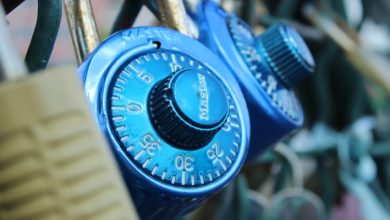The Role of Two-Factor Authentication in Crypto Security

- Understanding the Basics of Two-Factor Authentication
- Why Two-Factor Authentication is Essential for Crypto Security
- How Two-Factor Authentication Adds an Extra Layer of Protection to Your Crypto Assets
- Common Methods of Implementing Two-Factor Authentication in Crypto Platforms
- The Benefits of Using Two-Factor Authentication in the Crypto Industry
- Potential Risks and Limitations of Two-Factor Authentication in Crypto Security
Understanding the Basics of Two-Factor Authentication
Two-Factor Authentication, also known as 2FA, is a security process in which a user provides two different authentication factors to verify themselves. This adds an extra layer of security by requiring not only a password and username but also something that only the user has on them, such as a piece of information only they should know or have access to.
One of the most common forms of 2FA is a text message with a unique code that the user must enter after logging in with their username and password. Another popular method is using a mobile app that generates a time-based code. These codes are usually only valid for a short period of time, adding an additional level of security.
The use of 2FA is highly recommended in the cryptocurrency world to protect against unauthorized access to accounts and potential theft. With the increasing number of cyber attacks targeting crypto wallets and exchanges, having an extra layer of security can make a significant difference in safeguarding your assets.
By implementing two-factor authentication, crypto investors can significantly reduce the risk of falling victim to phishing scams, hacking attempts, and other malicious activities. It is a simple yet effective way to enhance the security of your digital assets and provide peace of mind knowing that your funds are better protected.
Why Two-Factor Authentication is Essential for Crypto Security
Two-factor authentication is a crucial component of maintaining security when it comes to handling cryptocurrency. By requiring users to provide two different forms of identification before accessing their accounts, it adds an extra layer of protection against unauthorized access.
One of the main reasons why two-factor authentication is so essential for crypto security is because it helps prevent unauthorized access to accounts even if a password is compromised. This is especially important in the world of cryptocurrency, where transactions are irreversible and once funds are sent, they cannot be recovered.
Having two-factor authentication enabled adds an additional barrier that hackers would need to bypass in order to gain access to an account. This significantly reduces the risk of falling victim to phishing attacks or other forms of cybercrime that could result in the loss of funds.
Furthermore, two-factor authentication provides peace of mind for users, knowing that even if their password is somehow leaked or stolen, their funds will still be protected by an additional layer of security. This can help users feel more confident in using cryptocurrency for transactions and investments.
In conclusion, the role of two-factor authentication in crypto security cannot be overstated. It is a simple yet effective way to enhance the security of accounts and protect funds from falling into the wrong hands. By enabling two-factor authentication, users can significantly reduce the risk of unauthorized access and potential loss of funds, making it an essential tool for anyone involved in the world of cryptocurrency.
How Two-Factor Authentication Adds an Extra Layer of Protection to Your Crypto Assets
Two-factor authentication (2FA) is a crucial security feature that adds an additional layer of protection to your cryptocurrency assets. By requiring users to provide two different forms of identification before accessing their accounts, 2FA significantly reduces the risk of unauthorized access and potential theft.
When setting up 2FA for your crypto accounts, you typically have the option to choose from different methods, such as SMS codes, email verification, or authenticator apps like Google Authenticator. This diversity of options ensures that you can select the most convenient and secure method for your needs.
One of the key advantages of using 2FA is that even if malicious actors manage to obtain your password through phishing or other means, they would still need the second form of verification to gain access to your account. This extra step acts as a powerful deterrent against unauthorized intrusions.
Furthermore, 2FA can help protect your crypto assets in case your password is compromised or if you accidentally reveal it to someone else. By requiring a secondary form of authentication, 2FA ensures that even if one factor is compromised, your account remains secure.
Overall, incorporating two-factor authentication into your crypto security measures is a simple yet effective way to enhance the protection of your digital assets. By implementing this additional layer of security, you can significantly reduce the likelihood of falling victim to cyberattacks and safeguard your investments in the volatile world of cryptocurrencies.
Common Methods of Implementing Two-Factor Authentication in Crypto Platforms
Two-factor authentication in crypto platforms can be implemented in various ways to enhance security measures. One common method is through the use of SMS verification codes sent to the user’s mobile phone. This process involves the user entering their password as the first factor, followed by the SMS code as the second factor.
Another popular method is the use of authenticator apps such as Google Authenticator or Authy. These apps generate a time-based, one-time password that the user must enter along with their password to access their account. This method provides an added layer of security as the codes are constantly changing and are not tied to a specific device.
Hardware tokens are also a reliable way to implement two-factor authentication. These physical devices generate secure codes that the user must enter when logging in. Hardware tokens are considered highly secure as they are not susceptible to phishing attacks or malware.
Biometric authentication, such as fingerprint or facial recognition, is another method gaining popularity in crypto platforms. Users can authenticate their identity using unique biometric features, adding an extra layer of security to their accounts.
In conclusion, implementing two-factor authentication in crypto platforms is essential for safeguarding user accounts against unauthorized access. By utilizing methods such as SMS verification, authenticator apps, hardware tokens, and biometric authentication, crypto platforms can enhance security measures and protect user assets effectively.
The Benefits of Using Two-Factor Authentication in the Crypto Industry
Implementing two-factor authentication in the crypto industry provides an extra layer of security for users, making it significantly harder for hackers to gain unauthorized access to accounts and digital assets. This added security measure requires users to provide two different types of identification before granting access, typically a password and a unique code sent to the user’s mobile device.
One of the main benefits of using two-factor authentication is that even if a hacker manages to obtain a user’s password, they would still need the second form of identification to access the account. This significantly reduces the risk of unauthorized access and helps protect against potential security breaches.
Furthermore, two-factor authentication can help prevent phishing attacks, where hackers trick users into revealing their login credentials through fake websites or emails. By requiring a second form of identification, users can verify the legitimacy of login attempts, adding an extra layer of protection against these types of attacks.
Overall, the use of two-factor authentication in the crypto industry is crucial in safeguarding users’ accounts and assets from malicious actors. By implementing this additional security measure, users can have greater peace of mind knowing that their digital assets are better protected from potential threats.
Potential Risks and Limitations of Two-Factor Authentication in Crypto Security
While two-factor authentication is an effective tool in enhancing crypto security, it is important to note that it is not without its potential risks and limitations. One of the main drawbacks of two-factor authentication is the possibility of phishing attacks. Cybercriminals can use sophisticated methods to trick users into providing their second-factor authentication code, thus compromising their accounts.
Another limitation of two-factor authentication is the reliance on a mobile device or email for receiving the second factor. If a user loses access to their device or email account, they may be locked out of their crypto account, leading to potential security risks. Additionally, if the second factor is stored on the same device as the login credentials, it may not provide sufficient protection in case of a device compromise.
Furthermore, two-factor authentication can sometimes be inconvenient for users, requiring additional steps to access their accounts. This inconvenience may lead some users to disable two-factor authentication or choose weaker authentication methods, leaving them vulnerable to security breaches.
Despite these limitations, two-factor authentication remains a crucial component of crypto security. By understanding the potential risks and taking steps to mitigate them, users can leverage the benefits of two-factor authentication while minimizing its drawbacks.



